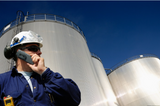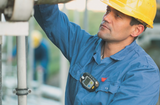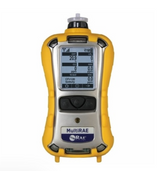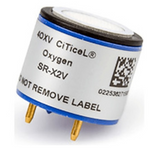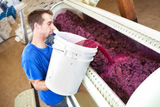Blog
Oil & Gas Facilities Moving Toward Multi-Gas Monitors
As oil and gas production continues to expand in the United States and other countries, many companies are seeing the benefit of personal gas monitors that check for more than just hydrogen sulfide. Refineries, processing plants, pipelines, storage farms, and offshore platforms all use or create a wide range of toxic gases and dangerous atmospheres. While single gas monitors like the
BW Clip 3-Year Detector H2S are ubiquitous, they aren't capable of warning workers of all the changing cond
…
Apr 7th 2014
A Home Inspection Gas Monitor - The Draeger Pac 3500 for CO
We recently received this review of the
Draeger Pac 3500 single gas monitor for carbon monoxide:
"I purchased the Draeger
Pac 3500 CO single gas monitor after a recent carbon monoxide-related death in a local restaurant. As a home inspector, I often go into a home that is vacant and turn on the heating system. If the levels of CO rise to a dangerous level, I might not know until it was too late.
"The Draeger unit is compact and easy to use. I like the digital readout so I do
…
Mar 26th 2014
Oilfield Safety Equipment: PPE for Oil and Gas Production Workers
With oil production continuing to expand in areas like Midland, Texas and The Bakken, OSHA regulators haven't been far behind. It's not just drillers and chainhands that fall under the protection guidlines, but toolhands and other contractors who need to be fully equipped to deal with the health hazards associated with oil and gas extraction. We're going to take this space to discuss the personal protective equipment (PPE) that takes care of the OSHA requirements.
In addition to those w
…
Mar 24th 2014
Draeger Pac 7000 Single-Gas Monitors
So many single-gas monitors are disposable these days. But not all of them. People buy disposable monitors for a range of reasons. Their workers lose them, or they want a fixed, measurable cost on their books. Some folks just want the cheapest monitor available so they are in compliance with OSHA regulations. But not every company falls into these categories. For companies who are serious about gas detection, the
Draeger Pac 7000 single-gas monitors make perfect sense.
Financially th
…
Mar 3rd 2014
Can My PID Monitor Distinguish Between Multiple VOCs?
Even for people who are quite familiar with
gas detection in industrial or confined space settings, there are some finer points where more explanation is necessary. A customer recently wrote with a question about his PID monitor. He wanted to know if his MultiRAE PID monitor which was set to measure Turpentine would pick up a multitude of volatile organic compounds (VOCs) or if it would only measure the specific gas.
We told him a MultiRAE monitor with a PID sensor can be set to detec
…
Jan 20th 2014
Warranty and Non-Warranty Repair for BW Honeywell Gas Monitors
As a full-service, factory-authorized BW Honeywell Gas Monitor Service Center,
PK Safety can take care of any warranty service your BW gas detector requires. Repairs under warranty are free to the customer and the PK Safety BW Service Center meets all relevant 9001:2008 ISO quality standards. Multiple Level 2 technicians are on staff to quickly take care of even large numbers of monitors quickly. In most cases monitors can be repaired and re-shipped within 24 hours.
The process is si
…
Jan 6th 2014
Microclip XT O2 Sensor Replacement: Replacing Sensors in Your BW GasAlert MicroClip XT Gas Monitor
Gas monitors are sophisticated instruments, but changing sensors is easy. By taking your time and following these simple instructions for replacing sensors, your BW Honeywell monitor will be back in the field in no time.
Remember, new sensors require a few hours to burn in - especially the O2 sensor - so don't turn the monitor on right away. Once you restart the monitor, you may receive a "sensor fail" message. Check through your work to make sure you installed the new sensors all the w
…
Oct 28th 2013
How-to: BW Honeywell Gas Detector Calibration
Calibration is very important for a gas monitor. It reestablishes a base line accuracy for the sensors, both electro-chemical and LEL catalytic bead. In order to perform as they were designed, gas monitors need to periodically be readjusted in the same way a guitar string needs tuning. Calibration of your gas monitors isn't difficult or time consuming (unless you have several hundred monitors, in which case it can be very tedious) and it's essential for accurate measurements over time.
…
Oct 24th 2013
What are the Differences Between Single-Gas H2S Monitors?
Here at PK we sell lots of
gas monitors. A large portion of those sales are for single gas hydrogen sulfide (H2S) monitors. Because we sell several brands and models of single gas monitors, the question is inevitably "what's the difference?"
First let's start with the industry leader in single-gas H2S monitors - the
BW Honeywell Clip H2S Monitor. This is a 2-year, fixed-life monitor that requires virtually no maintenance. With the single-gas BW Clip there's no need to change batte
…
Aug 26th 2013
Winery Gas Monitoring: Why Your Wineries' Gas Monitors Might Not Work
Harvest in the wine country is the peak of activity in the winemaking cycle. It's Go Time - The playoffs of the wine growing season. Preparing for the avalanche of grapes means everything in the winery must be tested, sanitized, and ready. Lab equipment for checking sugar, pH, and total acidity must be made ready, barrels need to be prepped, presses cleaned, and sorting tables sorted. It's also the right time to make sure gas monitors are calibrated.
There can be many areas that require
…
Jun 27th 2013


